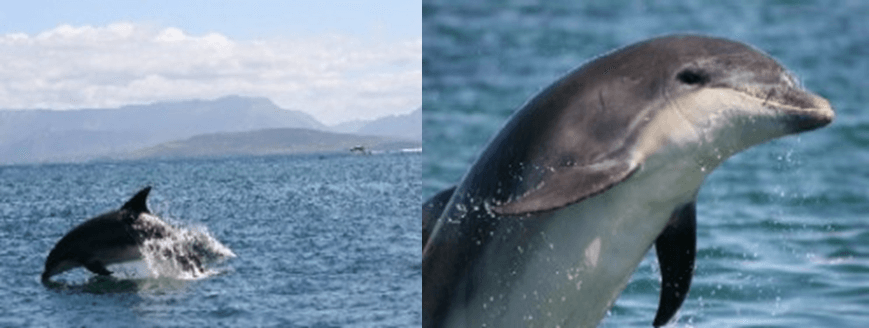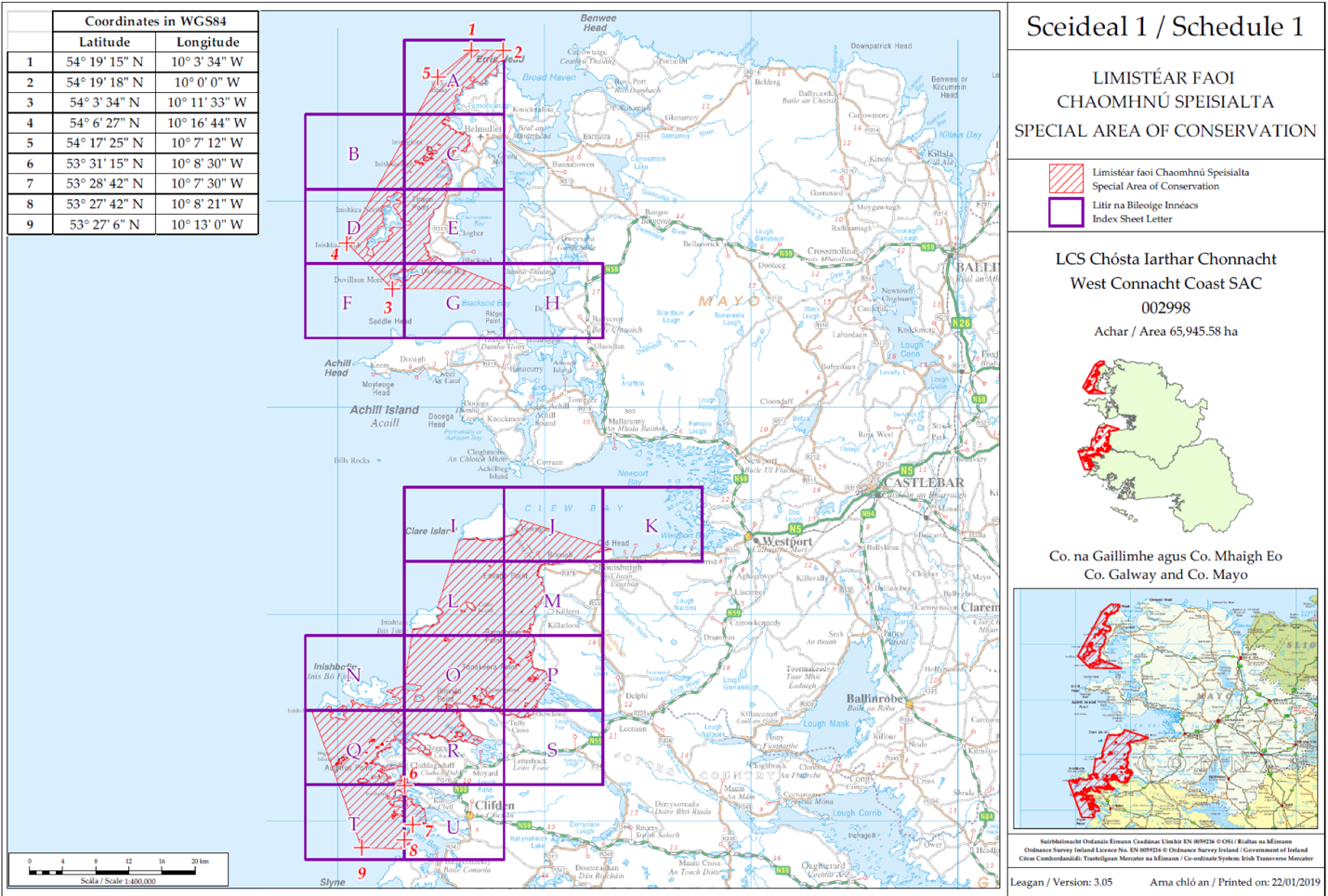Protecting the Dolphins of Connemara
In 2008 and 2009, a group of researchers set out to study the bottlenose dolphin population in the waters of northwest Connemara between Clare Island and Mannin Bay. The goal of their research was to examine the number of individuals, distribution and site fidelity of this particular bottlenose population. Keeping accurate, up to date information on population specifics is important for conservation measures to be effective and for determining what kind of management actions need to be taken to protect a species (Ingram et al., 2009). This survey, along with other surveys beginning in the early 2000s, have allowed for better protection of bottlenose dolphins in Irish waters (NPWS, 2015).
Bottlenose dolphins ( Tursiops truncatus ) can be found in oceans worldwide and can be identified by their elongated beak. They are usually light-dark grey in colour on their dorsal, or back, side and white on their ventral, or bottom, side. This kind of varied colouring of dark on the top and light on the bottom is common in the marine environment and is called countershading. Dolphins are social animals. They travel in groups referred to as either schools or pods. They are a species commonly found in the waters of the Northeast Atlantic. In fact, bottlenose dolphins are one of 24 cetacean (whales, dolphins and porpoises) species commonly found in Irish waters. They are a protected species in Ireland under the Irish Wildlife Acts of 1979 and 2000.
At the time of this survey there was only one Special Area of Conservation (SAC) for bottlenose dolphins in Irish waters located in the lower Shannon estuary. This area, which is used year-round by the bottlenose dolphins, had already been determined to be a critical habitat as it is also used as a breeding area. Researchers were setting out to determine if the waters of northwest Connemara were equally as critical for the dolphins as the waters of the lower Shannon estuary.
The scientists spent a total of 130 hours on the water conveying surveys. During this time on the water, they conducted a series of photo-identification surveys. Photo-identification is a tool used to identify individual dolphins using their natural markings on their dorsal fins such as scars, lesions, and nicks. From these surveys the number of dolphins using the waters of Connemara was estimated to be about 171 individuals, with 86 individuals identified by their uniquely marked dorsal fins. The dolphins were sighted in schools of 2 to 25 individuals with an average school size of 15. All of the sightings occurred within 1km of the mainland indicating that the dolphins using this area are not a part of a greater pelagic, or open ocean, population. In the 130 hours spent on the water, there were no newborn dolphins sighted indicating that this area is likely not used as a breeding ground.
Researchers were able to determine that the coastal waters of northwest Connemara are a critical habitat for bottlenose dolphins. Comparing the photo-identifications in this survey to previously completed surveys, they were able to determine that there is site fidelity. This means that individuals use this site regularly over the course of their lives. Comparing the images taken for photo-identification to the images of the known individuals of the Shannon SAC, there was no overlap. This indicates that the Connemara dolphins may be a completely different population. Overall, the population of Connemara bottlenose dolphins appears to be larger than the population of the Shannon SAC. The average school size of 15 in Connemara was also found to be larger than the average of size 6 in the Shannon. Due to the large population size and the site fidelity of these dolphins, it was proposed that a new bottlenose dolphin SAC be designated. Because all of the sightings occurred close to land, researchers suggested that the new SAC should be located within 5km of shore. Specifically, they recommended that the SAC should be placed between Slyne Head, Co. Galway and Roonagh, Co. Mayo and be less than 5km wide as this area is where most of the sightings for this study occurred.
Taking this survey and others into consideration, in 2012 the West Connacht Coast bottlenose dolphin SAC was proposed. The new SAC was officially declared and designated on March 8th, 2019. The SAC is split into two designated areas, one in western Connemara and one in western Mayo. Recent surveys have indicated that the population in these areas is between 140 and 296 individuals. Having these areas designated specifically for this bottlenose dolphin population protects them from excessive human interference. This newly established SAC will help to make sure that these dolphins are well monitored and protected. Because of this initial study, along with others, real change has been brought about for the conservation of these amazing animals that inhabit the waters of Ireland’s coasts.
© Ocean Research & Conservation Ireland (ORCireland) and www.orcireland.ie , est. 2017. If you like our blogs on the latest news in marine science and would like to support our work, visit www.orcireland.ie to become a member, to volunteer or to make a donation today. This article has been composed based on credible sources.
References:
Ingram, S., Kavanagh, A., Englund, A., and Rogan, E. 2009. Site assessment of the waters of northwest Connemara. A survey of bottlenose dolphins ( Tursiops truncatus ). Research Gate. NPWS. 2015. West Connacht Coast SAC (site code:2998) Conservation objectives supporting document- marine species. National Parks and Wildlife Service.
https://www.npws.ie/sites/default/files/publications/pdf/West%20Connacht%20Coast%20SAC%20(002998)%20... 2019. Statutory Instruments. S.I. No. 95 of 2019. European Union Habitats (West Connacht Coast Special Area of Conservation 002998) Regulations 2019. http://www.irishstatutebook.ie/eli/2019/si/95/made/en/pdf
SHARE THIS ARTICLE
















